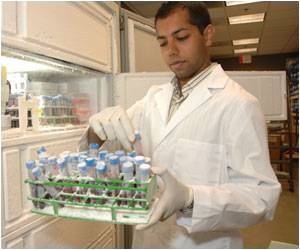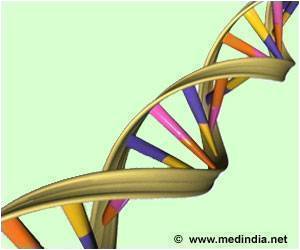A global hunt for genes that influence heart disease risk has uncovered 157 changes in human DNA that alter the levels of cholesterol and other blood fats.

Each of the changes points to genes that can modify levels of cholesterol and other blood fats and are potential drug targets. Many of the changes point to genes not previously linked to blood fats, also called lipids. A surprising number of the variations were also associated with coronary artery disease, type 2 diabetes, obesity, and high blood pressure.
The research also reveals that triglycerides – another type of blood lipid – play a larger role in heart disease risk than previously thought.
The results, published in two new papers appearing simultaneously in the journal Nature Genetics, come from the Global Lipids Genetics Consortium -- a worldwide team of scientists who pooled genetic and clinical information from more than 188,000 people from many countries and heritages.
The analysis of the combined data was led by a team from the University of Michigan Medical School and School of Public Health. They used sophisticated computing and statistical techniques to search for genetic variations that modify blood lipid levels.
The results increase by more than a third the total number of genetic variants linked to blood lipids. All but one of the variants associated with blood lipids are near stretches of DNA that encode proteins.
Advertisement
But, cautions senior author and U-M School of Public Health Professor Gonçalo Abecasis, Ph.D., it will take much further work to study the implicated genes and to find and test potential drugs that could target them. The consortium's "open science" approach will include publishing further detail online for other researchers to use freely toward this goal.
Advertisement
This analysis found that genetic variations that increase triglyceride or LDL-cholesterol levels are also associated with higher incidence of heart disease. But the analysis also casts further doubt on the role of high density lipoprotein, known commonly as HDL or "good cholesterol", in heart disease risk. In recent years, many drugs that modify HDL cholesterol have failed to show a benefit in preventing heart disease.
"We couldn't have done this on our own. Great scientists are usually very competitive, but it is great when we come together and accelerate progress." says Abecasis, who is the Felix E. Moore Collegiate Professor of Biostatistics, and director of the U-M Computational and Translational Genomics Initiative.
The right tool for the right SNPs
The GLGC is focused on finding, cataloging and analyzing genetic variations that modify blood lipids and heart disease risk. The researchers had access to a new tool – a custom DNA analysis chip they helped design that allows inexpensive analysis of DNA in studies of cardiovascular and metabolic traits.
Combined with genome-wide association study (GWAS) techniques, and the sheer number and diversity of the participants engaged by the researchers, the chip helped make the research possible on a much larger scale than ever before.
U-M graduate students Ellen M. Schmidt and Sebanti Sengupta – studying Bioinformatics and Biostatistics, respectively – played key roles in analysis of data, blending their skills to handle a massive amount of data and feed it through powerful computers.
Next steps
Willer says the new knowledge published in the papers should fuel drug development and experiments in animal models of cardiovascular risk. But in her specialty, probing huge amounts of genetic data, the next steps include looking for "networks" of genes that interact with one another, to try to glean clues about the function of the lesser-understood genes.
Looking for rare genetic variants that are linked with the most severe forms of lipid disorder and heart disease is another challenge, she says. The overlap between these rare, serious variations, and the more common but less severe variations, could help understanding of basic lipid biology.
Source-Eurekalert















